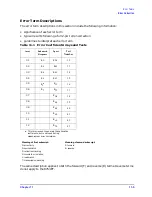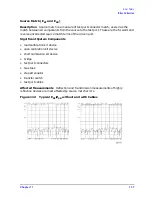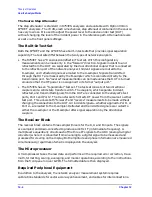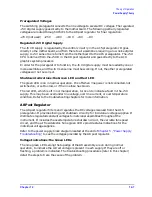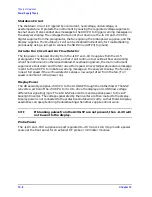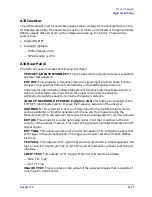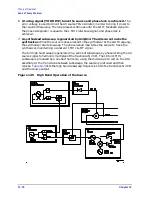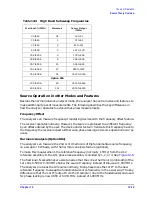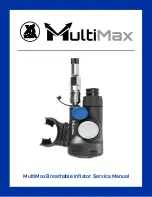
12-4
Chapter 12
Theory of Operation
How the Analyzer Works
The Source Step Attenuator
The step attenuator is standard in 8753ES analyzers and available with Option 004 on
8753ET analyzers. The 70 dB, electro-mechanical, step attenuator contained in the source
has very low loss. It is used to adjust the power level to the device under test (DUT)
without changing the level of the incident power in the reference path. Attenuation levels
are set via the front panel softkeys.
The Built-In Test Set
Both the 8753ET and the 8753ES have built-in test sets that provide signal separation
capability. The test sets differ between the two types of network analyzers.
• The 8753ET has a “transmission/reflection” test set. With this configuration,
measurements can be made only in the “forward” direction. Signals incident to and
reflected from the DUT are separated by the dual directional coupler that is connected
to the reflection port of the network analyzer. Incident signals are routed to the
R-sampler, and reflected signals are routed to the A-sampler. Signals transmitted
through the DUT are measured by the B-sampler which is connected directly to the
transmission port. No “reverse” measurements can be made unless the DUT is turned
around so that the RF power is now applied to its former “output port.”
• The 8753ES has an “S-parameter” test set. The test set consists of two directional
couplers and a solid-state transfer switch. The couplers, which separate incident,
reflected, and transmitted signals from the DUT are connected to the analyzer’s test
ports, Port 1 and Port 2. The transfer switch directs RF power from the source to either
test port. This allows both “forward” and “reverse” measurements to be made without
changing the connections to the DUT. All incident signals—whether applied to Port 1 or
Port 2—are routed to the R-sampler. Reflected and transmitted signals are routed to
either the A-sampler or the B-sampler after signal separation by the directional
couplers.
The Receiver Block
The receiver block contains three sampler/mixers for the R, A and B inputs. The signals
are sampled, and down-converted to produce a 4 kHz IF (intermediate frequency). A
multiplexer sequentially directs each of the three IF signals to the ADC (analog-to-digital
converter) where it is converted from an analog to a digital signal to be measured and
processed for viewing on the display. Both amplitude and phase information are measured
simultaneously, regardless of what is displayed on the analyzer.
The Microprocessor
A microprocessor takes the raw data and performs all the required error correction, trace
math, formatting, scaling, averaging, and marker operations, according to the instructions
from the front panel or over GPIB. The formatted data is then displayed.
Required Peripheral Equipment
In addition to the analyzer, the network analyzer measurement system requires
calibration standards for vector accuracy enhancement, and cables for interconnections.
Summary of Contents for 8753ES
Page 14: ...Contents xiv Contents ...
Page 15: ...1 1 1 Service Equipment and Analyzer Options ...
Page 26: ...1 12 Chapter1 Service Equipment and Analyzer Options Service and Support Options ...
Page 27: ...2 1 2 System Verification and Performance Tests ...
Page 203: ...3 1 3 Adjustments and Correction Constants ...
Page 262: ...3 60 Chapter3 Adjustments and Correction Constants Sequences for Mechanical Adjustments ...
Page 263: ...4 1 4 Start Troubleshooting Here ...
Page 297: ...5 1 5 Power Supply Troubleshooting ...
Page 317: ......
Page 318: ...6 1 6 Digital Control Troubleshooting ...
Page 337: ...6 20 Chapter6 Digital Control Troubleshooting GPIB Failures ...
Page 338: ...7 1 7 Source Troubleshooting ...
Page 369: ...7 32 Chapter7 Source Troubleshooting Source Group Troubleshooting Appendix ...
Page 370: ...8 1 8 Receiver Troubleshooting ...
Page 381: ...8 12 Chapter8 Receiver Troubleshooting Troubleshooting When One or More Inputs Look Good ...
Page 382: ...9 1 9 Accessories Troubleshooting ...
Page 389: ...9 8 Chapter9 Accessories Troubleshooting Inspect the Error Terms ...
Page 390: ...10 1 10 Service Key Menus and Error Messages ...
Page 439: ...10 50 Chapter10 Service Key Menus and Error Messages Error Messages ...
Page 440: ...11 1 11 Error Terms ...
Page 451: ...11 12 Chapter11 Error Terms Error Correction ...
Page 452: ...12 1 12 Theory of Operation ...
Page 482: ...13 1 13 Replaceable Parts ...
Page 487: ...13 6 Chapter13 Replaceable Parts Ordering Information Figure 13 1 Module Exchange Procedure ...
Page 500: ...Chapter 13 13 19 Replaceable Parts Replaceable Part Listings Figure 13 7 8753ET Cables Top ...
Page 502: ...Chapter 13 13 21 Replaceable Parts Replaceable Part Listings Figure 13 8 8753ES Cables Top ...
Page 512: ...Chapter 13 13 31 Replaceable Parts Replaceable Part Listings Figure 13 13 8753ES Cables Front ...
Page 544: ...14 1 14 Assembly Replacement and Post Repair Procedures ...
Page 550: ...Chapter 14 14 7 Assembly Replacement and Post Repair Procedures Covers Figure 14 2 Covers ...
Page 597: ...14 54 Chapter14 Assembly Replacement and Post Repair Procedures Post Repair Procedures ...




